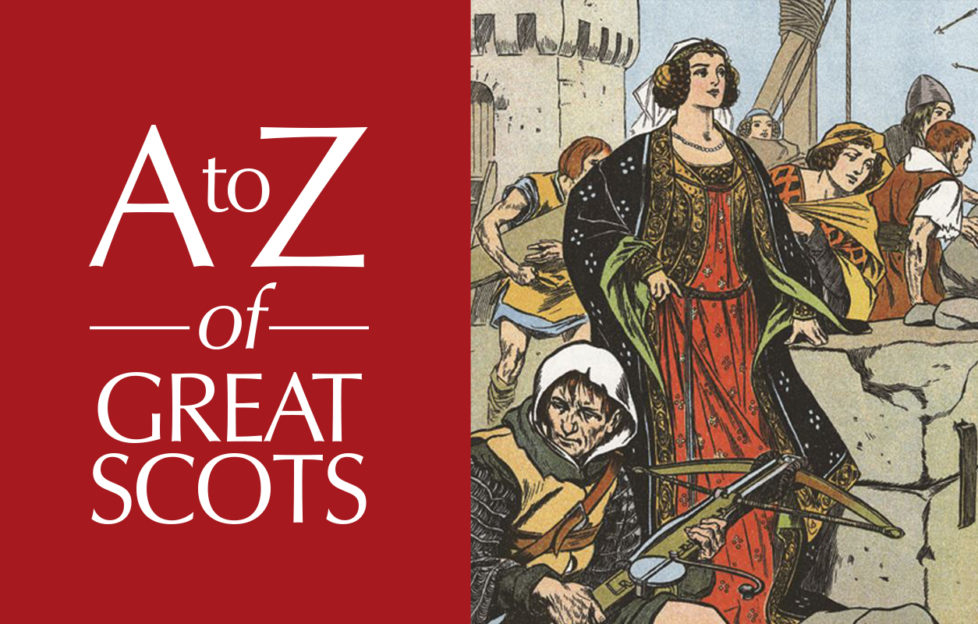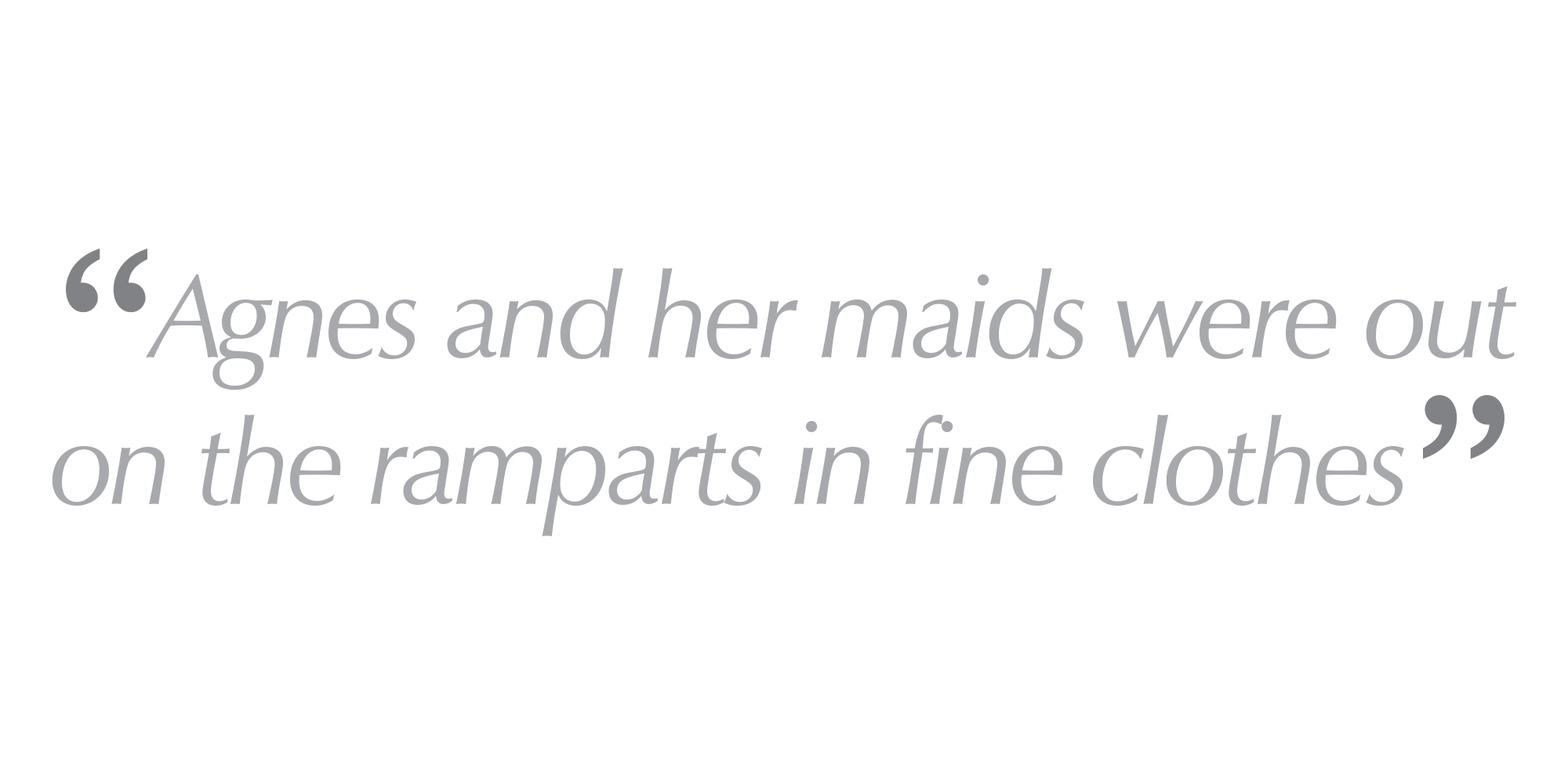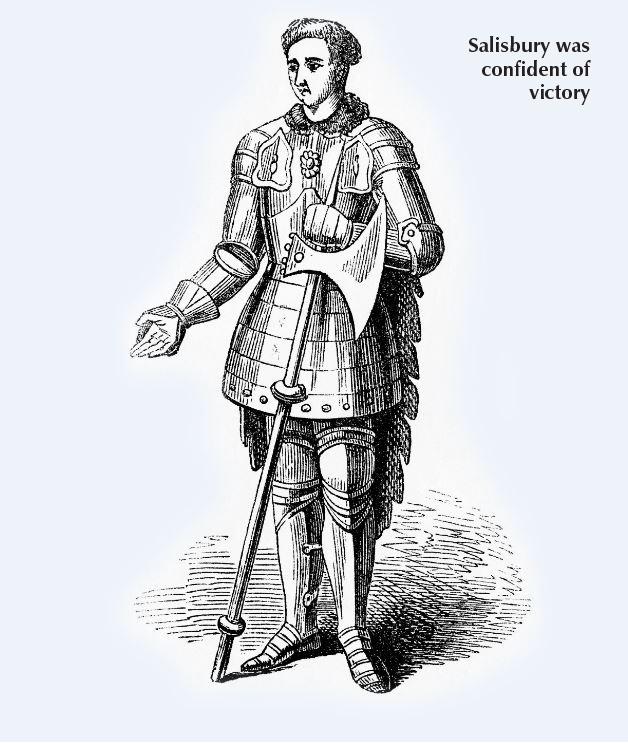Agnes Randolf

 Agnes Randolph, Countess of Dunbar, is a worthy feisty figure to kick off our new series
Agnes Randolph, Countess of Dunbar, is a worthy feisty figure to kick off our new series
WHEN the Earl of Salisbury arrived at Dunbar Castle on January 13, 1338, he clearly reckoned it would be an easy conquest for the English army: done and dusted in a day, perhaps even home in time for supper. If only it weren’t for Agnes Randolph.
Man of the house Patrick Dunbar was away fighting in the north of Scotland. With only his wife Agnes, her servants and a handful of guards to defend the castle, Salisbury thought he could defeat Black Agnes – so-called because of her striking dark eyes and hair – in moments. Spoiler: Salisbury was spectacularly wrong.
He showed up with 20,000 men and demanded Agnes surrender. She replied, “Of Scotland’s King I haud my house, I pay him meat and fee, and I will keep my gude auld house while my house will keep me.”
Never underestimate a woman defending her home
Salisbury’s troops began hurling boulders at the castle. Whenever there was a lull, Agnes and her maids would go out on to the ramparts in their finest clothes to nonchalantly dust away the damage with lace handkerchiefs, as the English looked on in bafflement. Little did they know she was also storing up their boulders for her next move.
Salisbury decided it was time to bring out his big guns: a giant siege tower with a battering ram, known as a sow. As it hurtled towards the castle, Agnes ordered her guards to drop the boulders, smashing its roof. The Earl was apoplectic.
Spring arrived, and Salisbury – a little embarrassed that he was being thwarted, and by a woman – saw the end in sight. The castle had been cut off by his troops, and their winter supplies were running out. He decided to wait until they starved.

Unfortunately for him, Agnes’ pal Sir Alexander Ramsay of Dalhousie got wind of what was happening and arrived by sea with boatloads of food, using a secret door to smuggle it into the castle. Next morning, Agnes casually sent a freshly-baked loaf and some fancy wine out to the English troops, and Salisbury realised he had once again been outwitted.
His next tactic was to capture Agnes’s brother and threaten to hang him if she didn’t surrender the castle. She told him to go ahead, because then she would inherit his earldom – we hope she was bluffing, but we can’t be certain. The English decided not to kill him after all, and it was clear their options were running out: this was one formidable dame.

In June 1338, word came that Edward III was less than impressed by how much this siege was costing – £6000 and counting, with nothing to show for it – and five months after Salisbury and his men arrived at Dunbar Castle, they admitted defeat and withdrew.
Black Agnes, later described by Salisbury as “that brawling, boisterous Scottish wench,” was victorious. One canny, courageous woman had taken on the English army – and won.
Discover more about the remarkable men and women who shaped Scotland and changed the world with our new bookazine Scottish Heroes

Available for online purchase from DC Thomson Shop or in stores at WHSmith



